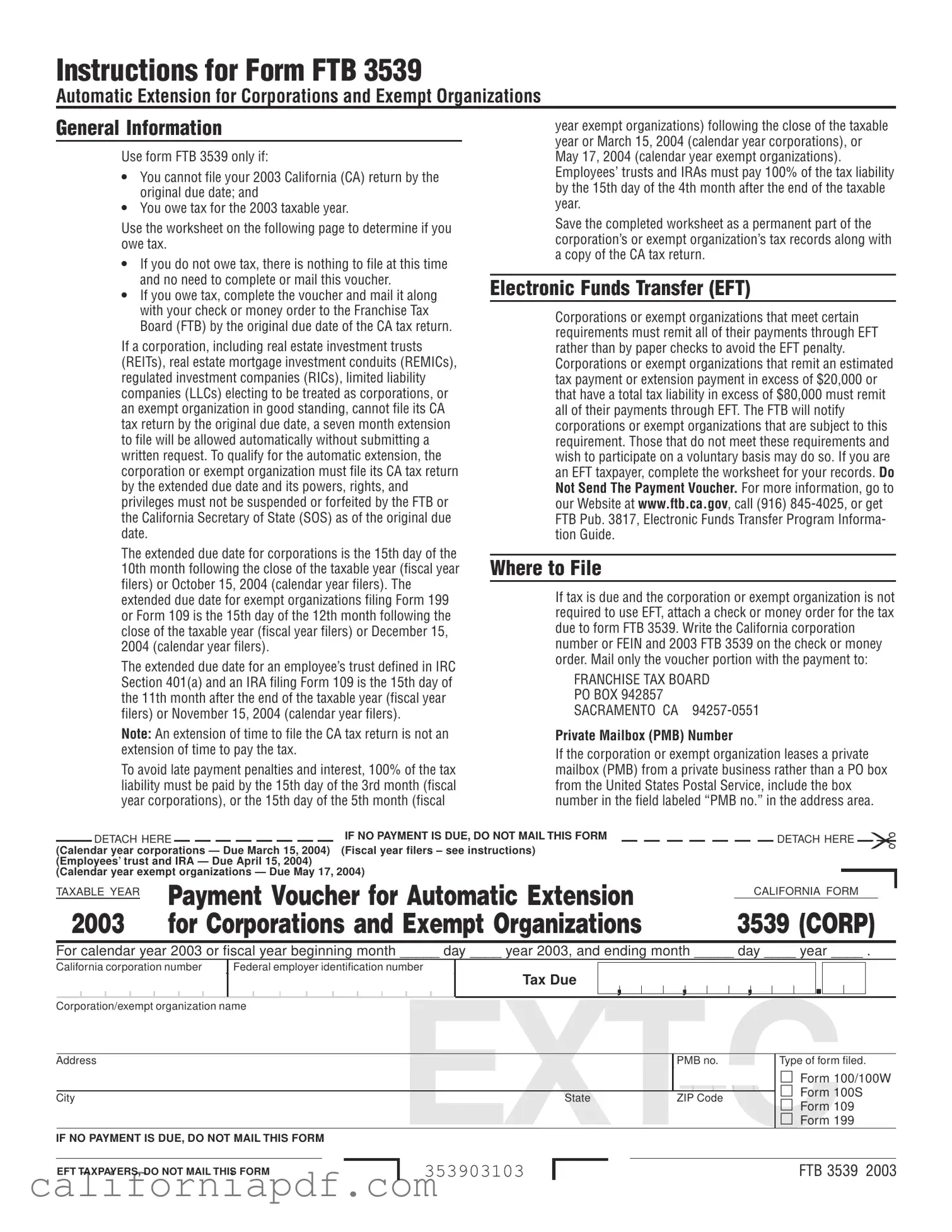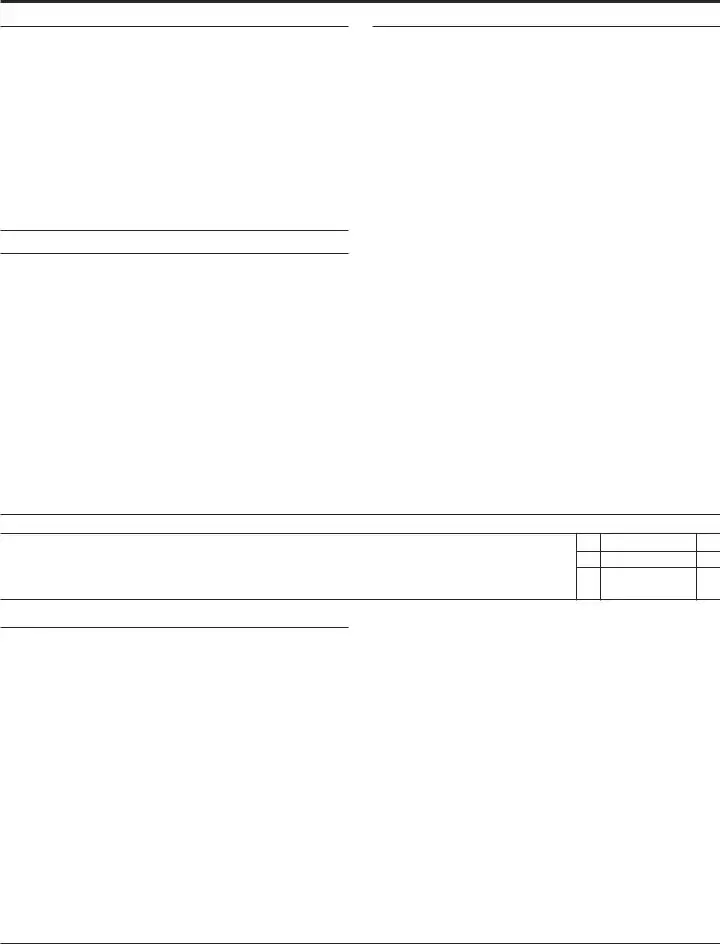General Information |
|
year exempt organizations) following the close of the taxable |
|
|
year or March 15, 2004 (calendar year corporations), or |
|
Use form FTB 3539 only if: |
|
May 17, 2004 (calendar year exempt organizations). |
• You cannot file your 2003 California (CA) return by the |
|
Employees’ trusts and IRAs must pay 100% of the tax liability |
|
by the 15th day of the 4th month after the end of the taxable |
original due date; and |
|
|
year. |
• You owe tax for the 2003 taxable year. |
|
|
|
Use the worksheet on the following page to determine if you |
|
Save the completed worksheet as a permanent part of the |
|
corporation’s or exempt organization’s tax records along with |
owe tax. |
|
|
a copy of the CA tax return. |
• If you do not owe tax, there is nothing to file at this time |
|
|
|
and no need to complete or mail this voucher. |
|
|
|
Electronic Funds Transfer (EFT) |
• If you owe tax, complete the voucher and mail it along |
|
with your check or money order to the Franchise Tax |
|
Corporations or exempt organizations that meet certain |
Board (FTB) by the original due date of the CA tax return. |
|
|
requirements must remit all of their payments through EFT |
If a corporation, including real estate investment trusts |
|
|
rather than by paper checks to avoid the EFT penalty. |
(REITs), real estate mortgage investment conduits (REMICs), |
|
Corporations or exempt organizations that remit an estimated |
regulated investment companies (RICs), limited liability |
|
tax payment or extension payment in excess of $20,000 or |
companies (LLCs) electing to be treated as corporations, or |
|
that have a total tax liability in excess of $80,000 must remit |
an exempt organization in good standing, cannot file its CA |
|
all of their payments through EFT. The FTB will notify |
tax return by the original due date, a seven month extension |
|
corporations or exempt organizations that are subject to this |
to file will be allowed automatically without submitting a |
|
requirement. Those that do not meet these requirements and |
written request. To qualify for the automatic extension, the |
|
wish to participate on a voluntary basis may do so. If you are |
corporation or exempt organization must file its CA tax return |
|
an EFT taxpayer, complete the worksheet for your records. Do |
by the extended due date and its powers, rights, and |
|
Not Send The Payment Voucher. For more information, go to |
privileges must not be suspended or forfeited by the FTB or |
|
our Website at www.ftb.ca.gov, call (916) 845-4025, or get |
the California Secretary of State (SOS) as of the original due |
|
FTB Pub. 3817, Electronic Funds Transfer Program Informa- |
date. |
|
tion Guide. |
The extended due date for corporations is the 15th day of the |
|
|
|
Where to File |
10th month following the close of the taxable year (fiscal year |
|
filers) or October 15, 2004 (calendar year filers). The |
|
|
|
If tax is due and the corporation or exempt organization is not |
extended due date for exempt organizations filing Form 199 |
|
or Form 109 is the 15th day of the 12th month following the |
|
required to use EFT, attach a check or money order for the tax |
close of the taxable year (fiscal year filers) or December 15, |
|
due to form FTB 3539. Write the California corporation |
2004 (calendar year filers). |
|
number or FEIN and 2003 FTB 3539 on the check or money |
The extended due date for an employee’s trust defined in IRC |
|
order. Mail only the voucher portion with the payment to: |
|
FRANCHISE TAX BOARD |
Section 401(a) and an IRA filing Form 109 is the 15th day of |
|
the 11th month after the end of the taxable year (fiscal year |
|
PO BOX 942857 |
filers) or November 15, 2004 (calendar year filers). |
|
SACRAMENTO CA 94257-0551 |
Note: An extension of time to file the CA tax return is not an |
|
Private Mailbox (PMB) Number |
extension of time to pay the tax. |
|
If the corporation or exempt organization leases a private |
|
|
To avoid late payment penalties and interest, 100% of the tax |
|
mailbox (PMB) from a private business rather than a PO box |
liability must be paid by the 15th day of the 3rd month (fiscal |
|
from the United States Postal Service, include the box |
year corporations), or the 15th day of the 5th month (fiscal |
|
number in the field labeled “PMB no.” in the address area. |


